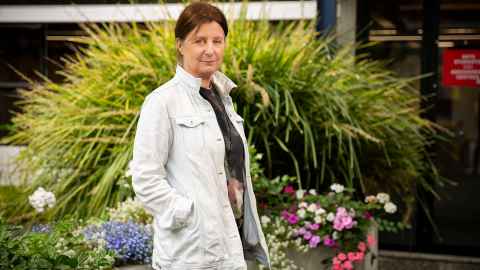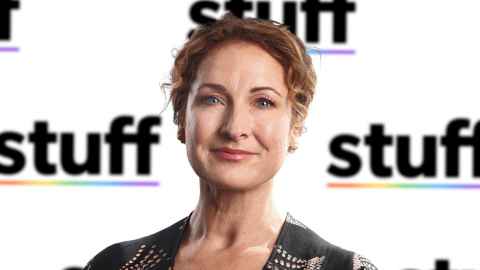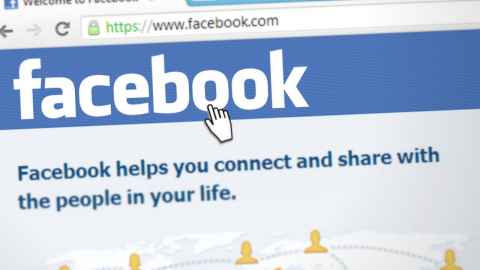Chance for media to focus on what's important to New Zealanders
24 June 2020
New Zealand media faces a conundrum as it tries to create a trustworthy, innovative and sustainable model in the Covid-19 world, while absorbing thousands of job losses.

German-owned Bauer pulling out of the market and taking a magazine like the New Zealand Listener and many others, with it, that’s pretty tragic for our cultural history.
As Covid-19 spread around the world, so did 24-hour media coverage of the story. But while fast and factual news was never more crucial, it was delivered in a landscape in which advertising revenue had collapsed, newsrooms had been depleted and hundreds, if not thousands, of media jobs in New Zealand were on the line or already gone.
Professor Annie Goldson, who teaches journalism and documentary filmmaking in the Faculty of Arts, believes the industry’s woes pre-dated the virus. She says if it’s going to survive beyond Covid-19, it needs to look at different economic models and decide what’s important.
“Especially if you think about German-owned Bauer pulling out of the market and taking a magazine like the New Zealand Listener and many others, with it, that’s pretty tragic for our cultural history,” she says. “If we can find any lessons, one might be we shouldn’t make ourselves so vulnerable to that kind of decision when it comes to things that are culturally very important to us.”
Neal Curtis, an associate professor in media and communication, agrees. “This is the result of the processes of globalisation, where we squeeze the local, which becomes subsumed by the transnational, and then the local has no defence when the transnational makes a decision.”
Lessons may well emerge from Sinead Boucher’s purchase of New Zealand’s largest news website. Boucher, the CEO, paid $1 to buy Stuff, which has a large regional footprint, from its Australian owners Nine Entertainment and is floating the idea of giving staff a shareholding stake in Stuff. Policy makers and the public have responded positively to having a major news source owned by New Zealanders again.

Neal and Annie still have concerns about commercial broadcasters such as MediaWorks (owned by US-based Oaktree Capital Management) looking for financial support from the $50 million media rescue package announced by Broadcasting Minister Kris Faafoi in April.
But the live broadcast platform is still a vital source of information in a national crisis. The popularity of the 1pm Prime Minister’s press conferences on TVNZ and TV3, and online, showed traditional media still plays a part in people’s lives. The ratings for the 7 May announcement that the country would soon move to Level 2 showed 661,800 people aged 5+ tuned in, not counting livestream.
Faafoi did announce the Government would cut the transmission fees television broadcasters usually pay, for six months, saving them about $21 million in total. Whether that’s enough to get MediaWorks through – still looking for a buyer at the time this article was written – remains to be seen.
“Obviously we also need media and journalism outlets outside the government-funded ones to hold power to account,” says Annie. “That should be fundamental to robust journalism. It’s also important to support regional coverage that has suffered over the past decade.
“Whereas most outlets produce some good journalism, the profit motive of corporate media can lead to an increased presence of clickbait opinion pieces and ‘reckons’ based on very little expertise or research. Those items are cheap to produce and garner a lot of heat and light. We need to be careful about what we’re funding.”
She thinks government money could be well spent on media outlets that are already engaging successfully with the online environment and are New Zealand-owned.
“Online, The Spinoff and Newsroom seem responsive to providing coverage pertinent to Māori and underserved communities. They also have a strong subscriber base, meaning they have loyal audiences so they’re a solid, far-sighted investment.
“Then there are outlets such as iwi radio and TV programmes such as The Hui … we need to be sure they also receive funding and support.”
As well as Māori media outlets, Neal believes it comes down to whether the Government decides local quality production and independent journalism is worth supporting.
“That’s sites for the citizenry, not linked to large international corporations that are only in it for profit.”
Niche options are even tied to the University: Dr Maria Armoudian’s The Big Q uses academic expertise in long-form articles and opinion pieces and The Challenge runs in-depth features about research tackling challenges facing New Zealand.
For mass media, Neal says paywalls aren’t necessarily a solution. “If content goes behind a paywall, most people then can’t access it, so what they’re left with is the open-access content, with websites that promote all kinds of stories, scandal and conspiracy theories. Keeping local, pro-citizen journalism open access is so important.”
In the UK, The Guardian is an example of a media organisation staying open-access through a mixed model of an endowment trust, key sponsors and ‘partners’, and subscriptions.
“It has been particularly successful because it adapted to the online environment early and has the advantage of a mass readership,” says Annie.
“It’s also worth noting that The Guardian has opened an Australian and New Zealand office so when you go to its web page from here, it will also give you local news,” says Neal.
He believes that’s a genius idea.
“They’ve also realised that lots of people would actually like to publish in The Guardian, so they opened up a section for articles by academics and other experts which provides them with free, sometimes institutionally subsidised, high-quality content, as have Newsroom, The Spinoff and The Conversation.”

We have to convince Facebook that they don’t want to kill the goose that laid the golden egg.
He says tech giants Facebook and Google can take much of the blame for sucking away local advertising and should be compelled to give something back.
Annie agrees. “Australia is asking for a percentage of the commercial profits that Facebook and Google make, and that’s a model we should try, perhaps in partnership with Australia to give us more weight. We can’t force them, but since the Christchurch massacre and debates around live-streaming, I do think we’ve gained some moral high ground in that area.”
“We have to convince Facebook that they don’t want to kill the goose that laid the golden egg,” says Neal. “They have a profoundly parasitic relationship to journalism and most parasitic relationships are based on keeping the host alive.”
He says the news media will adapt and survive in a new, and hopefully improved, form.
“The way I hope it does that is to go local. Local production with a regional and national focus, and an international perspective.”
Both agree the future is not all bleak, and Covid-19 has highlighted the media’s role in a national emergency.
“What we’ve seen since Covid,” says Annie, “is that when you’re staring death in the face, you want information and a range of expert opinions. The media will also be involved on that front, because that’s the vehicle through which most people can access information and knowledge.”
– Julianne Evans
This is part three of the Ingenio Winter 2020 cover story, Grasping challenges: a land of opportunity in a Covid-19 world.
Read Part One of the story: The Economy
Read Part Two of the story: The Creative Arts
Email ingenio@auckland.ac.nz